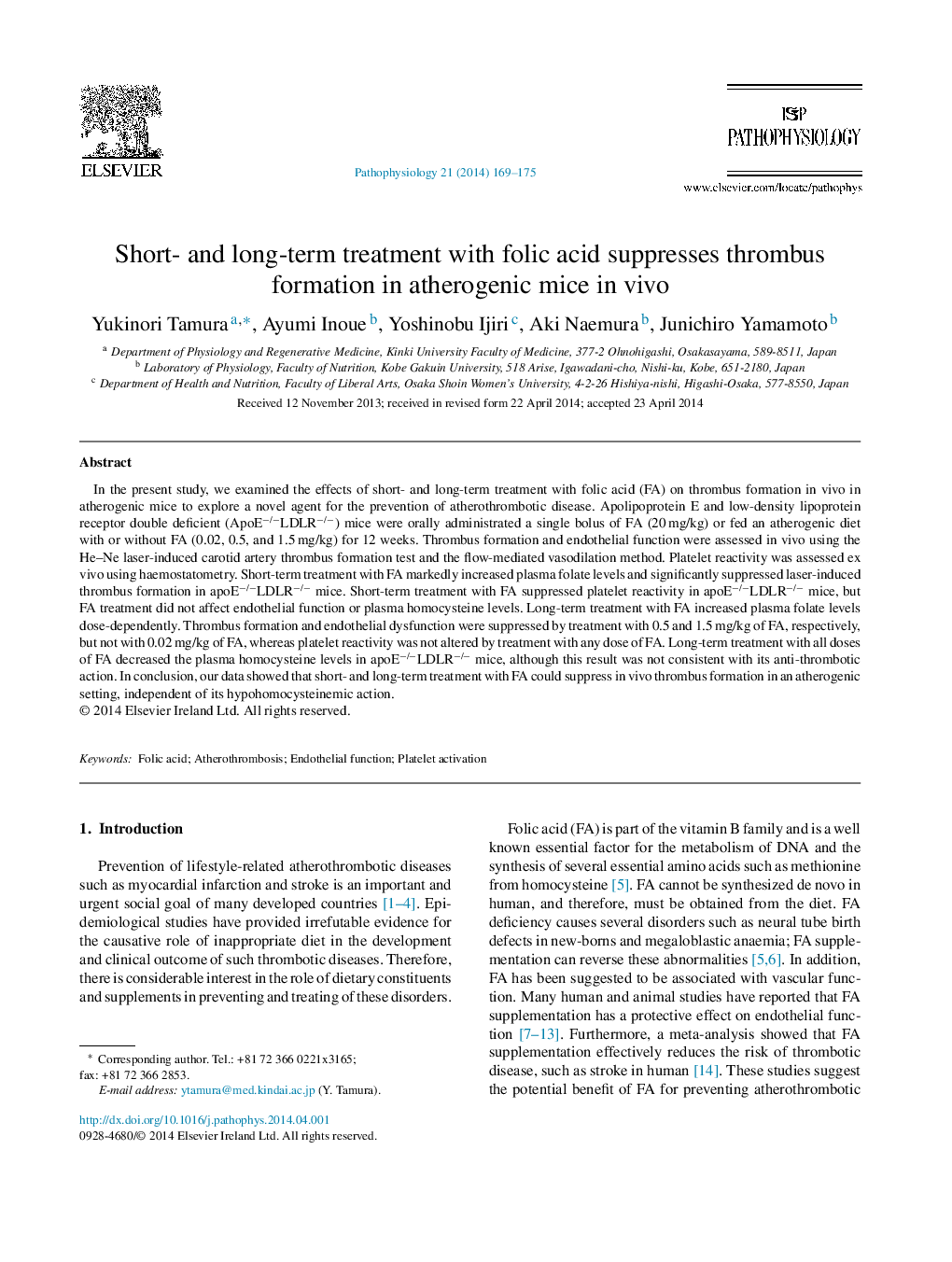| Article ID | Journal | Published Year | Pages | File Type |
|---|---|---|---|---|
| 4136990 | Pathophysiology | 2014 | 7 Pages |
In the present study, we examined the effects of short- and long-term treatment with folic acid (FA) on thrombus formation in vivo in atherogenic mice to explore a novel agent for the prevention of atherothrombotic disease. Apolipoprotein E and low-density lipoprotein receptor double deficient (ApoE−/−LDLR−/−) mice were orally administrated a single bolus of FA (20 mg/kg) or fed an atherogenic diet with or without FA (0.02, 0.5, and 1.5 mg/kg) for 12 weeks. Thrombus formation and endothelial function were assessed in vivo using the He–Ne laser-induced carotid artery thrombus formation test and the flow-mediated vasodilation method. Platelet reactivity was assessed ex vivo using haemostatometry. Short-term treatment with FA markedly increased plasma folate levels and significantly suppressed laser-induced thrombus formation in apoE−/−LDLR−/− mice. Short-term treatment with FA suppressed platelet reactivity in apoE−/−LDLR−/− mice, but FA treatment did not affect endothelial function or plasma homocysteine levels. Long-term treatment with FA increased plasma folate levels dose-dependently. Thrombus formation and endothelial dysfunction were suppressed by treatment with 0.5 and 1.5 mg/kg of FA, respectively, but not with 0.02 mg/kg of FA, whereas platelet reactivity was not altered by treatment with any dose of FA. Long-term treatment with all doses of FA decreased the plasma homocysteine levels in apoE−/−LDLR−/− mice, although this result was not consistent with its anti-thrombotic action. In conclusion, our data showed that short- and long-term treatment with FA could suppress in vivo thrombus formation in an atherogenic setting, independent of its hypohomocysteinemic action.
